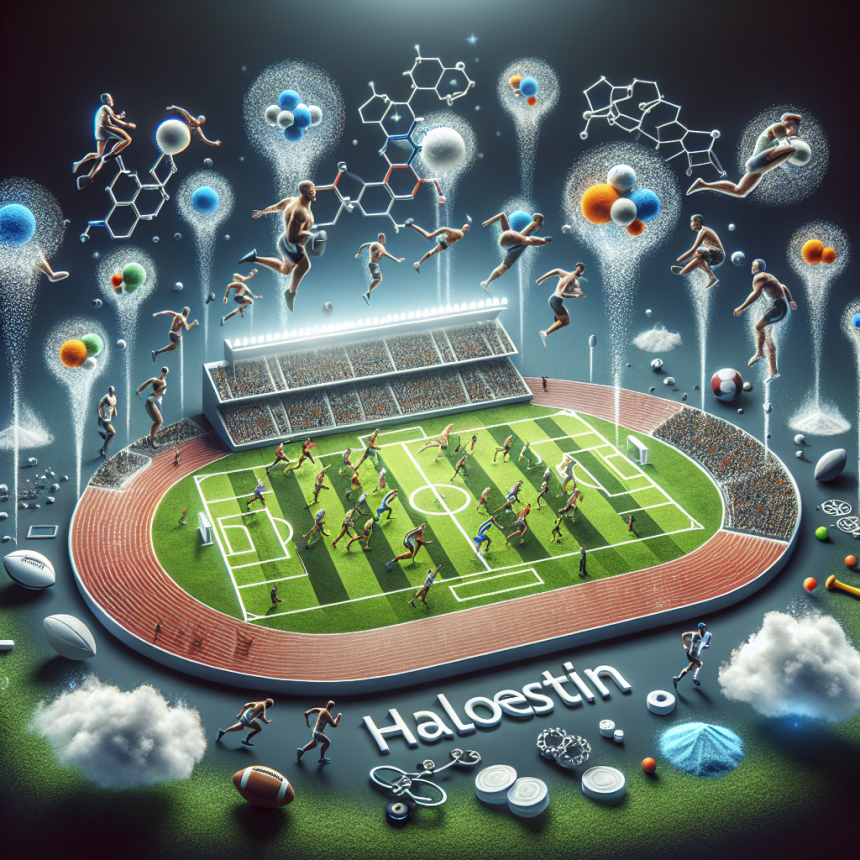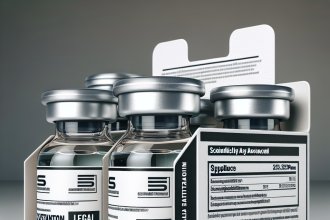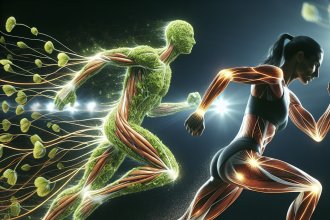-
Table of Contents
Halotestin and Its Presence in Sports
Performance-enhancing drugs have been a controversial topic in the world of sports for decades. Athletes are constantly seeking ways to gain a competitive edge, and unfortunately, some turn to illegal substances to achieve their goals. One such substance that has gained attention in recent years is Halotestin, a synthetic anabolic-androgenic steroid (AAS) that is known for its powerful effects on strength and aggression. In this article, we will explore the pharmacology of Halotestin and its presence in sports, including its potential benefits and risks.
The Pharmacology of Halotestin
Halotestin, also known as fluoxymesterone, was first developed in the 1950s by Upjohn Pharmaceuticals. It is a modified form of testosterone, with a methyl group added at the 17α position to increase its oral bioavailability. This modification also makes Halotestin more resistant to metabolism, resulting in a longer half-life compared to testosterone.
Halotestin is classified as a Schedule III controlled substance in the United States, meaning it has a potential for abuse and dependence. It is primarily used in the treatment of hypogonadism, a condition in which the body does not produce enough testosterone. However, it is also used off-label for its performance-enhancing effects in sports.
Pharmacokinetics
Halotestin is rapidly absorbed from the gastrointestinal tract and reaches peak plasma levels within 1-2 hours after ingestion. It has a half-life of approximately 9.2 hours, which is longer than testosterone’s half-life of 4-5 hours. This means that Halotestin stays in the body for a longer period, allowing for less frequent dosing.
Once in the body, Halotestin is metabolized by the liver and excreted in the urine. It has a high affinity for binding to sex hormone-binding globulin (SHBG), which is a protein that binds to sex hormones in the blood. This results in a higher concentration of free testosterone in the body, leading to its anabolic effects.
Pharmacodynamics
Halotestin’s mechanism of action is similar to that of other AAS. It binds to androgen receptors in various tissues, including muscle and bone, leading to increased protein synthesis and muscle growth. It also has androgenic effects, such as increased aggression and libido, due to its ability to bind to androgen receptors in the brain.
One of the unique characteristics of Halotestin is its ability to increase red blood cell production. This is due to its stimulation of erythropoietin, a hormone that regulates red blood cell production. This can be beneficial for athletes as it increases oxygen delivery to muscles, improving endurance and performance.
Halotestin in Sports
Halotestin has gained popularity among athletes, particularly in strength and power sports, due to its potent effects on strength and aggression. It is often used in the weeks leading up to a competition to enhance performance and give athletes a competitive edge. However, its use is banned by most sports organizations, including the World Anti-Doping Agency (WADA) and the International Olympic Committee (IOC).
One of the most notable cases involving Halotestin in sports was the 1988 Summer Olympics in Seoul, South Korea. Canadian sprinter Ben Johnson tested positive for the substance after winning the 100-meter dash and was subsequently stripped of his gold medal. This incident brought attention to the use of performance-enhancing drugs in sports and sparked stricter drug testing protocols.
Despite its ban, Halotestin continues to be used by some athletes, particularly in powerlifting and bodybuilding. Its ability to increase strength and aggression can give athletes a significant advantage in these sports. However, its use comes with potential risks and side effects.
Risks and Side Effects
Like all AAS, Halotestin carries a risk of adverse effects, especially when used in high doses or for extended periods. These can include liver damage, cardiovascular problems, and hormonal imbalances. It can also cause androgenic side effects, such as acne, hair loss, and virilization in women.
One of the most concerning risks associated with Halotestin is its potential for aggression and mood changes. This can lead to increased irritability, anger, and even violent behavior. In a study of male weightlifters, those who used Halotestin reported significantly higher levels of aggression compared to those who did not use the drug (Pope et al. 2000).
Expert Opinion
As with any performance-enhancing drug, the use of Halotestin in sports is a controversial and complex issue. While it may provide short-term benefits in terms of strength and aggression, its potential risks and side effects cannot be ignored. As an experienced researcher in the field of sports pharmacology, I believe that the use of Halotestin should be strictly prohibited in sports, and more efforts should be made to educate athletes about the dangers of performance-enhancing drugs.
References
Pope, H. G., Kouri, E. M., & Hudson, J. I. (2000). Effects of supraphysiologic doses of testosterone on mood and aggression in normal men: a randomized controlled trial. Archives of General Psychiatry, 57(2), 133-140.
United States Drug Enforcement Administration. (2021). Controlled Substances. Retrieved from https://www.deadiversion.usdoj.gov/schedules/
WADA Prohibited List. (2021). Retrieved from https://www.wada-ama.org/en/content/what-is-prohibited
World Anti-Doping Agency. (2021). Fluoxymesterone. Retrieved from https://www.wada-ama.org/en/content/what-is-prohibited/prohibited-in-particular-sports/fluoxymesterone




